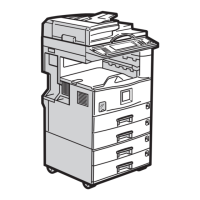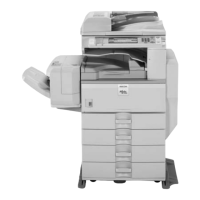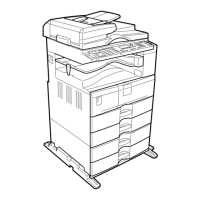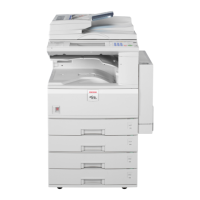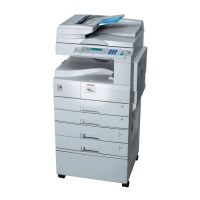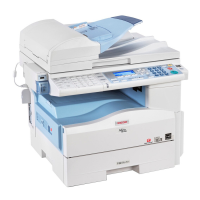BIT SWITCHES
A256/A257 2-6 SM
Bit Switch 14: D channel layer 3 (Selection IE in S: SETUP)
No. FUNCTION COMMENTS
0
ISDN G3 information
transfer capability
0:
3.1 kHz audio
1:
Speech
In tx mode, this determines the information
transfer capability informed in the [SETUP]
message.
In rx mode, this determines the information
transfer capability that the machine can use to
receive a call.
Set this bit to 1 if the ISDN does not support 3.1
kHz audio. This bit is only used in the USA and
the UK.
1-2
Not used Do not change the factory settings.
3
4
Channel selection in
[SETUP] in tx mode
Bit43Setting
0 0 Any channel
0 1 B1 channel
1 0 B2 channel
11Not used
Any channel:
When this is informed to the
exchanger, the exchanger will select either B1 or
B2.
5
Called ID mapping
0:
Called party number
1:
Keypad facility
0:
Called ID is mapped to the called party
number.
1:
Called ID is mapped to the keypad facility.
6
Numbering plan for the
called party number
0:
Unknown
1:
E.164
E.164:
This may be used in Sweden if an AXE10
exchanger is fitted with old software, and in
Australia.
Unknown:
This is the normal setting.
7
Subaddress coding type
0:
IA5 (NSAP)
1:
BCD (ISO8348)
This is normally kept at 0. However, some
networks require this bit to be at 1.
Bit Switch 15: D channel layer 3 (Judgement R: MSG)
No. FUNCTION COMMENTS
0
Action when receiving a
[SETUP] signal containing
no called subaddress, if the
subaddress was included in
the dialed number
0:
A reply is sent
1:
No reply is sent
This bit depends on user requirements. If it is at 1,
communication will be halted if the other terminal
has not input the subaddress.
1-4
Not used Do not change the factory settings
5
Global call reference
0:
Ignored
1:
Global call number is
used
Global call reference means 'call reference value
= 0'. This bit determines how to deal with such an
incoming call if received from the network.
Keep this bit at 1 in Germany (1TR6), also in
countries where the global call reference is used.
6-7
Not used Do not change the factory settings.
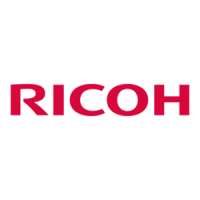
